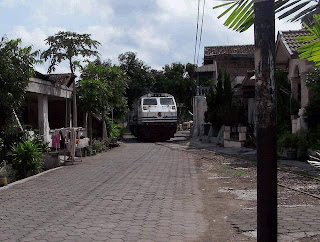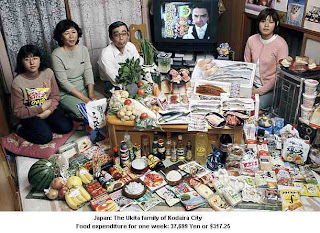
Monday, December 8, 2008
Wednesday, December 3, 2008
About F-1













F1 car is made up of 80,000 components, if it were assembled 99.9% correctly, it would still start the race with 80 things wrong.
When an F1 driver hits the brakes on his car he experiences retardation or deceleration comparable to a regular car driving through a BRICK wall at 300kmph..
F1 car can go from 0 to 160 kph AND back to 0 in FOUR seconds...
F1 car engines last only for about 2 hours of racing mostly before blowing up on the other hand we expect our engines to last us for a decent 20yrs on an average and they quite faithfully DO....that's the extent to which the engines r pushed to perform...
An average F1 driver looses about 4kgs of weight after just one race due to the prolonged exposure to high G forces and temperatures for little over an hour.
At 550kg a F1 car is less than half the weight of a Mini.
à To give you an idea of just how important aerodynamic design and added down force can be, small planes can take off at slower speeds than F1 cars travel on the track.
à Without aerodynamic down force, high-performance racing cars have sufficient power to produce wheel spin and loss of control at 160 kph. They usually race at over 300 kph.
In a street course race like the Monaco grand prix, the down force provides enough suction to lift manhole covers. Before the race all of the manhole covers on the streets have to be welded down to prevent this from happening.
The refuelers used in F1 can supply 12 liters of fuel per second. This means it would take just 4 seconds to fill the tank of an average 50 liter family car. They use the same refueling rigs used on US military helicopters today.
TOP F1 pit crews can refuel and change tyres in around 3 seconds. It took me 8 sec to read above point.
Normal tyres last 60 000 - 100 000 km. Racing tyres are designed to last 90 - 120 km.
A dry-weather F1 tyre reaches peak operating performance (best grip) when tread temperature is between 900C and 1200C.(Water boils boils at 100C remember) At top speed, F1 tyres rotate 50 times a second.
And that's not Magic.... Its only a game...............
A dry-weather F1 tyre reaches peak operating performance (best grip) when tread temperature is between 900C and 1200C.(Water boils boils at 100C remember) At top speed, F1 tyres rotate 50 times a second.
And that's not Magic.... Its only a game...............
Monday, December 1, 2008
Wednesday, November 26, 2008
Would You Eat at This Restaurant?









Dinner in the Sky: A chef prepares meals while diners enjoy panoramic views harnessed in seats that swivel 180 degrees, suspended via a crane. By Jayne Clark, USA TODAY Here's a dining concept that'll make your head — if not your stomach — spin: It's dinner at a table suspended 165 feet in the air with chairs that swivel 180 degrees. Dubbed Dinner in the Sky, the attraction is making its U.S. debut Monday in Orlando at the annual International Association of Amusement
Parks and Attractions convention. About 25,000 attendees are expected at the one-stop-shopping event, where the amusement industry rolls out new thrill rides and related products. The high-flying dining venue was introduced in Europe last year and consists of a platform suspended from a crane. Guests are harnessed into 22 seats, with space in the center for a chef and two helpers. With local officials' blessings, the platform can be transported to just about anywhere the crane can maneuver.
One recent spot: in front of the Amiens Cathedral in France , with dinner prepared by a three-star Michelin chef. Ghysels sees all sorts of U.S. possibilities for the dangling restaurant, including air space over the Grand Canyon, Niagara Falls and golf courses. "I think human beings always like to see what's happening from the air," he says. "And there are so many wonderful natural spots in the U.S. Dinner in the Sky could go anywhere." The restaurant (dinnerinthesky. com) belongs firmly in the special-occasion category, however.
The cost for eight hours is about $11,444 — not including catering.
Sunday, November 23, 2008
Thursday, November 20, 2008
Sunday, November 2, 2008
Subscribe to:
Comments (Atom)
































